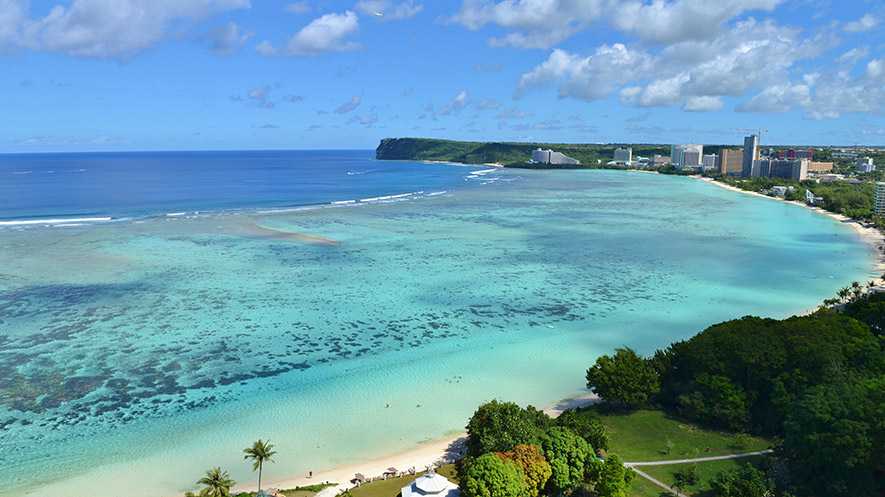As the oceans warm and humans migrate to or grow in numbers in coastal areas of the world, scientists are increasingly keeping an eye on ocean seagrasses and their decline. A new analysis shows that seagrass meadows in Guam have decreased by 22 percent.
American University Environmental Science Prof. Kiho Kim and his student, Carly K. LaRoche, set out to investigate the status of seagrass in Guam, the largest and most populated island in the Marianas. They found that the most common type of Guam seagrass, known as Enhalus acoroides, decreased in total size by 22 percent between 2004 and 2015. This loss is significant because seagrasses provide important ecosystem benefits, such as shoreline protection, support of food species, and they act as carbon sinks; up to 10 percent of the ocean's organic carbon resides in seagrass meadows, with most of it in the soils.
There are significant gaps in scientific understanding of seagrass coverage, and of how much is being lost, particularly in the western tropical Pacific. Satellite imagery is helping, but it's not enough, Kim says, and direct observation is important. Using a combination of satellite imagery analysis and on-the-ground measurements and mapping of the coastal terrain, the researchers gathered the data necessary to arrive at their conclusion.
Globally, seagrass meadows have declined by 30 percent between 1879 and 2006; however, much research shows that the rate of loss has been accelerating since 1990, due to coastal development, dredging activities and declining water quality as drivers. In comparison, seagrasses in Guam, in spite of the loss, have fared better, Kim says. This difference may reflect the level of human activity on the island, which has been increasing, but is substantially lower than in those areas where large-scale losses have occurred, such as the northeast US, the Gulf of Mexico, and the Mediterranean.
At the moment, it's unclear if natural or human factors caused the change in Guam or if it's a long-term trend due to climate and tidal variability, Kim says.
The finding is cause for concern because of the important role seagrasses play in the ecosystem, and the stresses that Guam's coastal areas are already under. In Guam, as in many island nations, the biggest pollutant is sewage-derived nitrogen, due to poor wastewater infrastructure. Guam's sewage plants are old, effluent is not treated to the highest standards, and water samples routinely show sewage at amounts higher than government levels set for safe recreational waters in freshwater and marine environments.
"Decade of change in Enhalus acoroides seagrass meadows in Guam, Mariana Islands," has published in the journal Marine and Freshwater Research.
Source: American University



